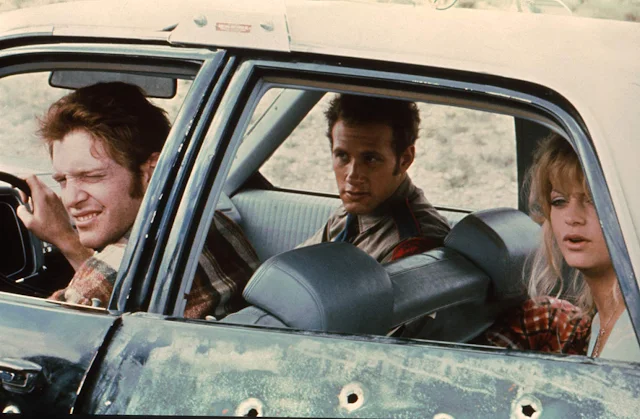 |
| William Atherton, Michael Sacks, and Goldie Hawn in The Sugarland Express |
Critics disagree in the most interesting ways. When Roger Ebert reviewed The Sugarland Express in 1974, he disliked Steven Spielberg's use of the automobiles: "If the movie doesn't finally succeed, that's because Spielberg has paid too much attention to all those police cars (and all the crashes they get into), and not enough to the personalities of his characters." But for Pauline Kael, the cars were one of the major reasons she referred to Spielberg's first theatrical feature as "one of the most phenomenal début films in the history of movies": "Spielberg patterns the cars; he makes them dance and crash and bounce back. The cars have tiffs, wrangle, get confused. And so do the people." For once (and I don't think it always happened), Kael's insight into a director's gift was more acute than Ebert's. She got at the essence of at least one aspect of Spielberg's genius as a moviemaker: the ability to provide an environment for characters, to express their personalities through their toys and tools. Goldie Hawn never gave a better performance than she does in this film, perfectly capturing the naïveté, the vanity, and the implacable determination of Lou Jean, showing the grit behind the giggle. (She and William Atherton do a wonderful scene in which they do almost nothing but laugh.) I think Ben Johnson is a little underused as the highway patrol captain in charge of trying to capture Lou Jean and Clovis, while at that same time trying to rescue the young officer (Michael Sacks) they have hijacked, but maybe that's because Johnson was such an old pro that we naturally want to see more of him. The film was unaccountably not a box office success, but to my mind it's one of Spielberg's best movies, with a texture of supporting characters (and cars) that aptly reminded Kael of Preston Sturges.




